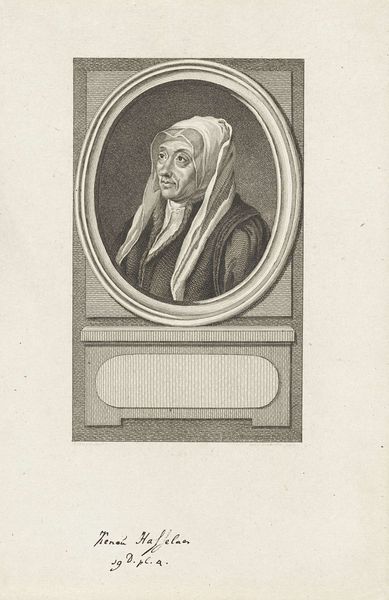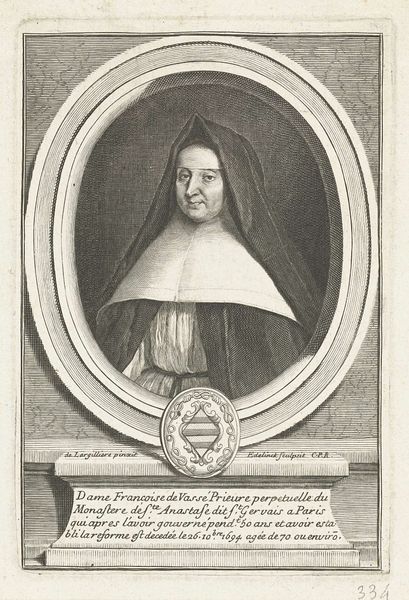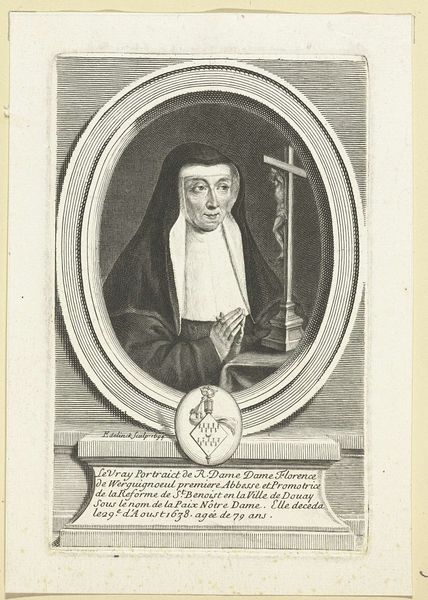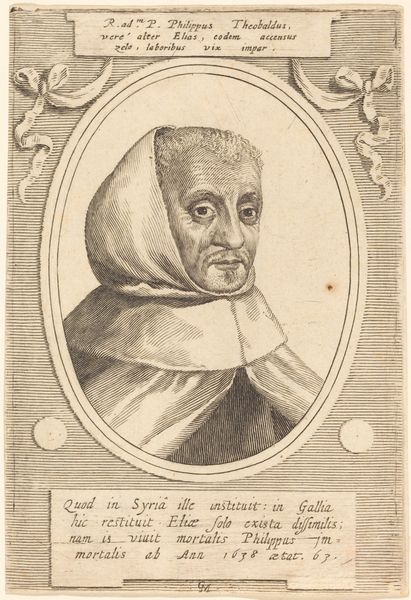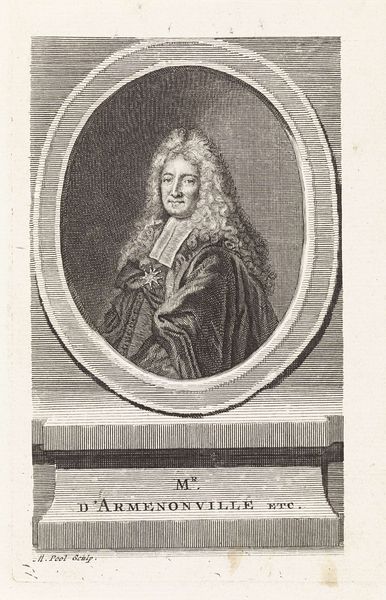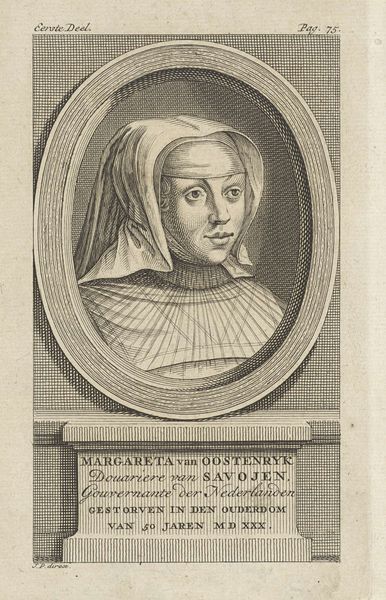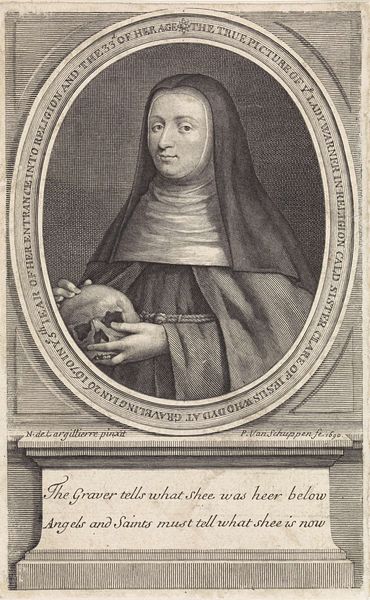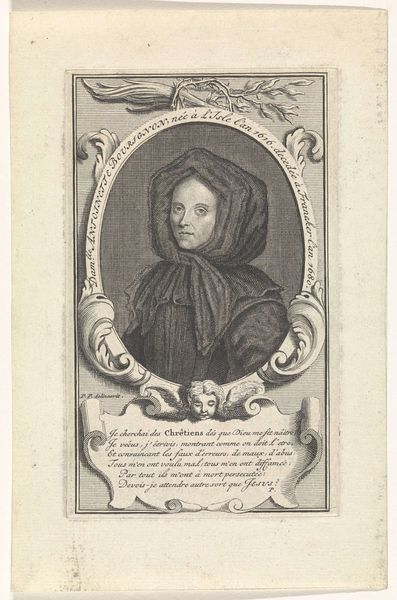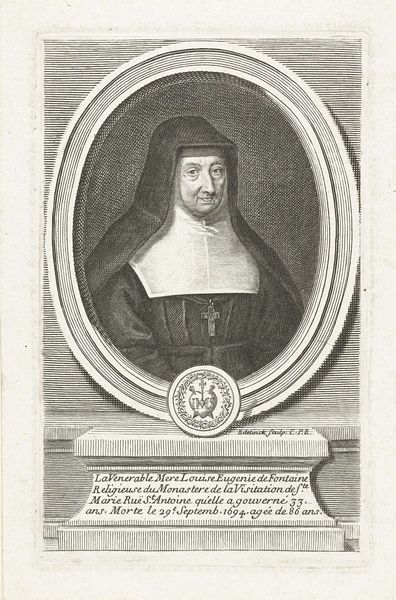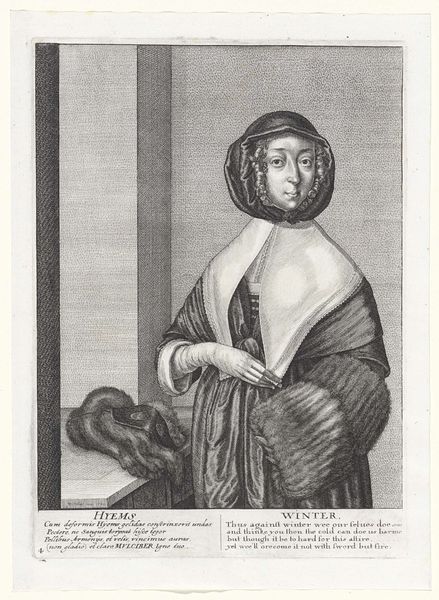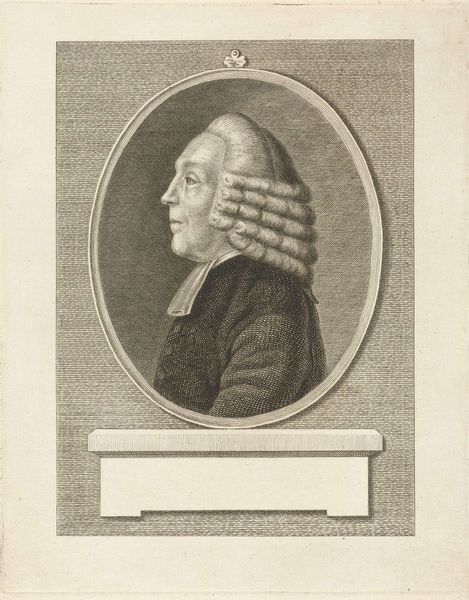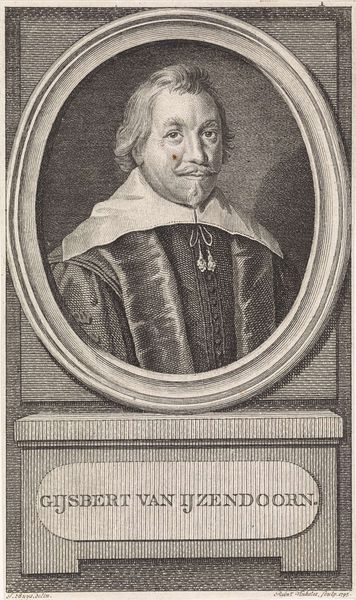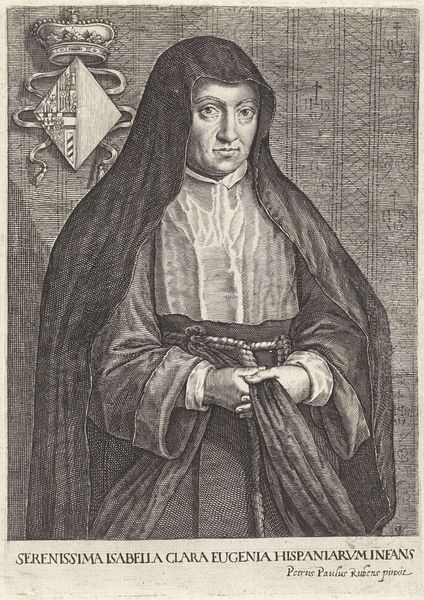
Dimensions: height 158 mm, width 97 mm
Copyright: Rijks Museum: Open Domain
Curator: The portrait of Kenau Simonsdochter Hasselaar, created in 1788 by Reinier Vinkeles, presents a figure of historical significance rendered in the engraving medium, now residing here at the Rijksmuseum. What strikes you upon seeing this image? Editor: Well, first off, it's monochrome of course. And very linear. The severe facial expression, combined with that almost geometric headscarf, give it an air of somber rigidity. Curator: Indeed. Kenau Hasselaar, immortalized in this Baroque engraving, achieved legendary status for her staunch defense of Haarlem against the Spanish during the Eighty Years' War. But in truth, Vinkeles worked within a landscape increasingly obsessed with national myth-making. This print helped solidify that. Editor: And looking closer at the craftsmanship, the tight hatching creates incredibly fine gradations of tone. The composition directs our attention firmly to her face. There's no softening here; the gaze is direct and unyielding. Curator: The formal qualities of the piece serve to uphold its historical role. It certainly participated in constructing Kenau’s narrative, aligning her image with notions of Dutch resilience and patriotism that shaped collective memory at the time. We should not think this is an entirely neutral image. Editor: Absolutely, it’s clearly an idealised portrayal. Perhaps one meant to communicate virtue or strength. I wonder, what are the choices when rendering somebody as an engraving? I imagine you try and simplify their facial features to deliver the basic essence, something legible to the masses. Curator: The act of turning Hasselaar into a symbol required smoothing away some of the contradictions in her biography. We see that visual flattening at work, where the portrait takes part in wider narratives of national identity. Her individual complexities are being flattened in support of cultural and political agendas. Editor: So, ultimately this engraving acts not just as a portrait, but as an exercise in historical representation, employing sharp, clear lines to emphasize an image of determined national pride. It seems the form itself reinforces the message. Curator: Precisely. Vinkeles gives us an ideal—more than a person. Editor: A stoic visual. A really interesting study of history, rendered in light and shadow.
Comments
No comments
Be the first to comment and join the conversation on the ultimate creative platform.
